- Home
- slideshows
- miscellaneous
- Louis Vuitton and Gucci are the only 2 luxury companies to consistently rank among the world's most valuable brands for the last 20 years. Here's how they grew to dominate the high-end retail sector.
Louis Vuitton and Gucci are the only 2 luxury companies to consistently rank among the world's most valuable brands for the last 20 years. Here's how they grew to dominate the high-end retail sector.
In the early 1900s, Guccio Gucci had an idea that would change the world.

In 1938, the Gucci shop opened on Via Condotti in Rome. Nearly a decade later, the Gucci logo was introduced, and soon after, the brand's famous red stripe was born.

Gucci, along with his sons Aldo and Vasco, created many of the brand's classic bags in the early 1950s and turned their store into a national staple.
But it wasn't until after Guccio died in 1953, that the brand became an international emblem of luxury.
Source: WWD
After the founder's death, the Gucci family opened other stores around the world, including in Paris, London, and Tokyo.
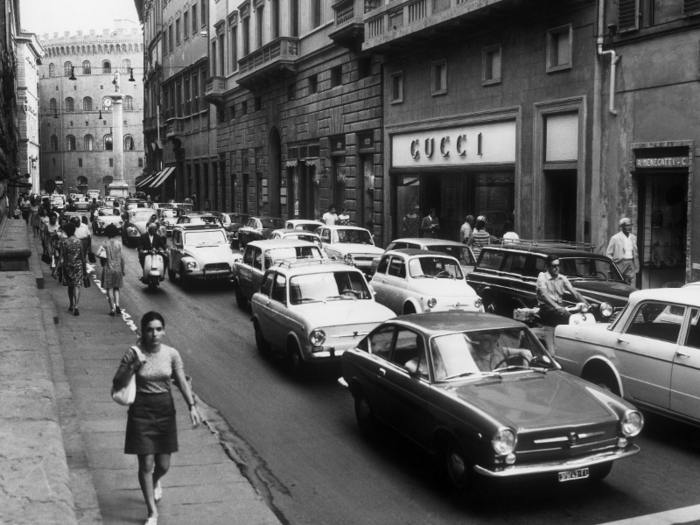
The 1960s saw an increase in the brand's prestige and clientele. Gucci was welcomed and worn by the Hollywood elite, from Grace Kelly to Jackie Onassis Kennedy.
The jet-set era had been defined, and Gucci has since become a synonym for it.
But then hard times came, and it would be decades until the brand saw the height of its early glory days again.
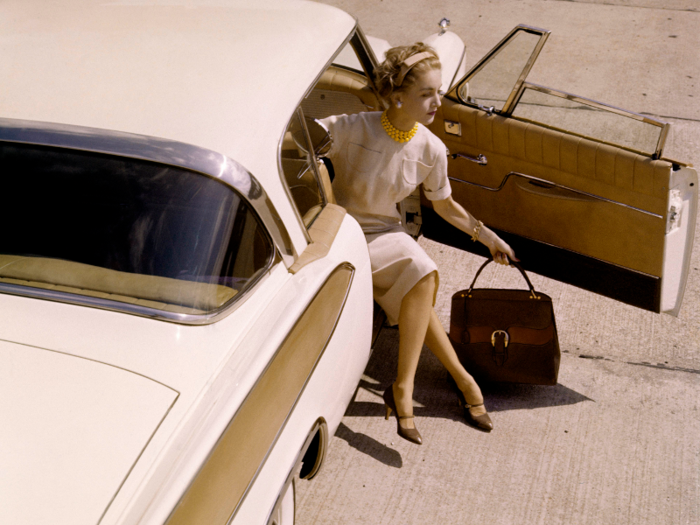
In the 1990s, Tom Ford made Gucci synonymous with the word chic; the 2000s saw Frida Giannini define the brand as heritage. But it was Alessandro Michele, who, in the 2010s, once again made the brand synonymous with decadence.
Long before Guccio Gucci was even born, Louis Vuitton — the founder of his namesake brand — had arrived in Paris and opened a luggage company of his own.
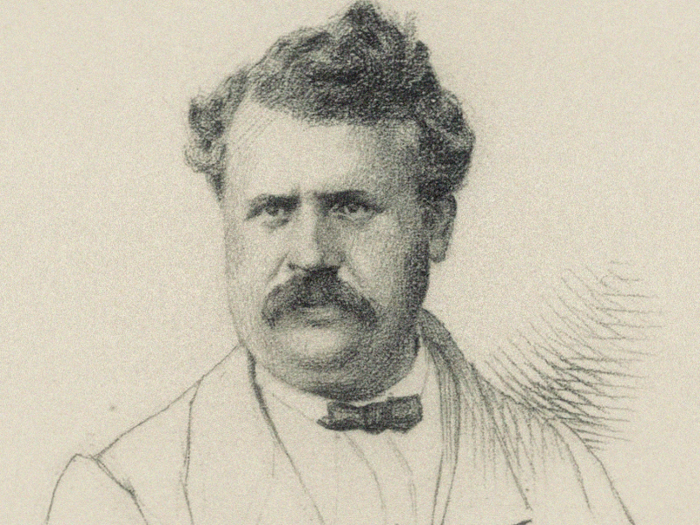
Hailing from the village of Anchay in France, Vuitton came to Paris in 1837 and was welcomed by a city in the midst of the Industrial Revolution. In 1854, he opened his first luggage store in the city, then moved the workshops to Asnières-sur-Seine, a commune northeast of Paris.
It was there that he and his craftsman created what is still regarded as one of the most iconic travel accessories of all time — the waterproof flat top luggage trunk.
At the time, flat trunk luggage was popular, but often attracted thieves. Vuitton is also credited with revolutionizing the luggage lock, putting a single lock system on his luggage, which is still in use today.
In 1896, the iconic LV monogram was introduced — nearly 50 years before Gucci's emblem was designed.
By the mid-20th century, Louis Vuitton luggage became a staple item for jet-setters, and the brand expanded into daywear, which saw the introduction of the iconic LV purse. By the 1990s, the brand was so successful that now-legendary designer Dapper Dan was able to make a fortune selling knockoffs to rappers.
Even wearing faux Louis Vuitton was a symbol of status.
In 1997, Marc Jacobs was tapped to be artistic director of women's collections at Louis Vuitton, and the brand was catapulted to the forefront of fashion's new era.
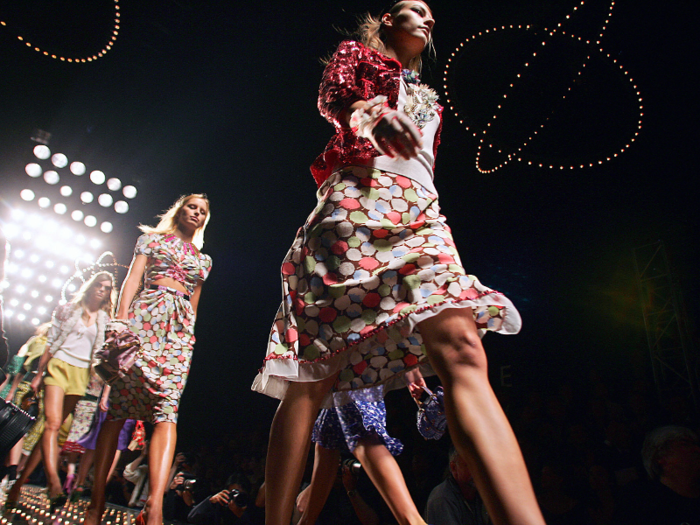
"[Louis Vuitton] is a testament to how you have to be a really strong brand with absolute clarity and conviction in who you are and what you stand for, internally and externally," Rebecca Robins, global chief learning and culture officer at the consultant group Interbrand, told Business Insider. "The stronger you have that, the harder and stronger you play with others, and that is why Louis Vuitton is the first to have ever hit the top 20 and top 100 and that's why its the only luxury brand to have stayed there."
As Vogue reports, Marc Jacobs made hat boxes popular and launched artistic collaborations that defined the late 2000s, introducing monogrammed umbrellas, tights, fans, and even fur muffs. The Louis Vuitton logo became recognizable around the world.
In 2013, Nicolas Ghesquière replaced Jacobs as the artistic director of women's collections. Ghesquière is now helping to lead the brand through a time where streetwear is the new jet-set, and tiny bags are the new trunk luggage.
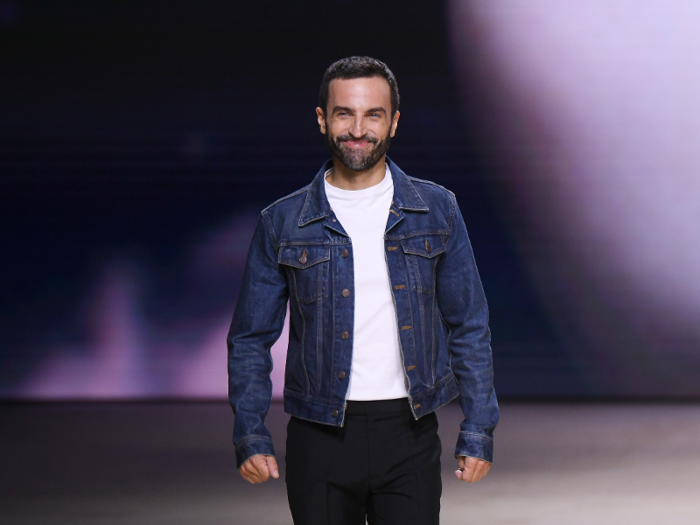
But it seems no cultural turning point was too sharp for the company to surmount, as Louis Vuitton today ranks as the world's No. 1 luxury brand, with its brand valuation topping $30 billion, according to Interbrand.
In 1994, Tom Ford became creative director of Gucci, just three years before Jacobs took the helm at Louis Vuitton.
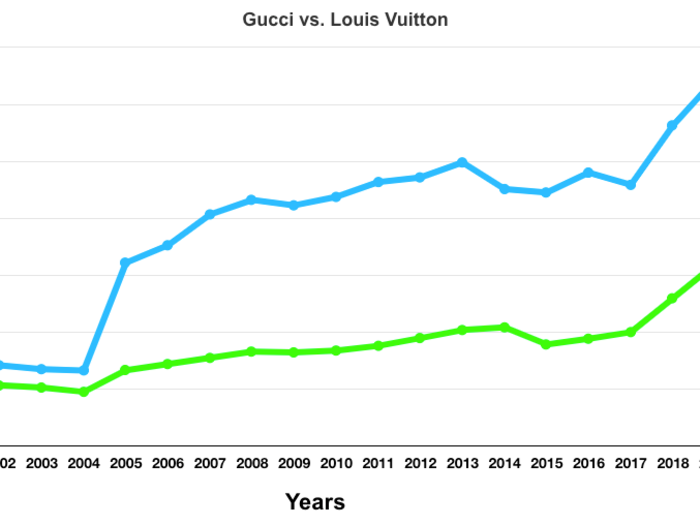
Both designers were considered game-changers while heading their respective brands and held their positions into the 2000s.
According to Interbrand, in 2000, Louis Vuitton had a brand valuation of $6.8 billion and maintained a steady-but-faltering single billion-dollar estimation until 2005.
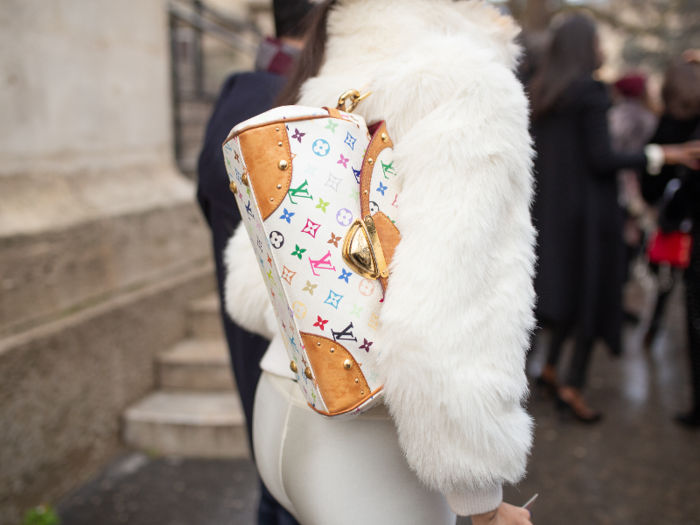
By that time, Jacobs had launched many successful collaborations, including one with Japanese artist Takashi Murakami, who, according to Vogue, is credited with creating the now iconic white and multicolored LV bag pictured above.
In 2004, to celebrate its 150th anniversary, Louis Vuitton opened stores around the world, including in New York City and Johannesburg.
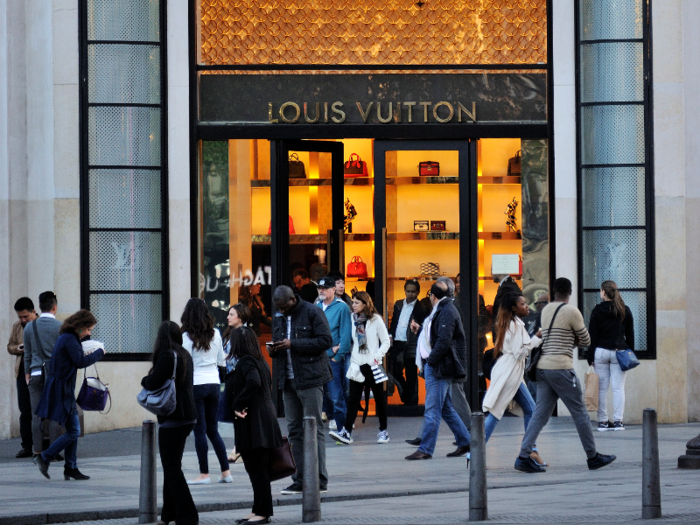
The company also opened a store in Shanghai. In 2005, Louis Vuitton reopened its Champs-Élysée store in Paris. By the end of that year, the brand's value more than doubled to over $16 billion, according to Interbrand.
The brand grew steadily into the 2010s, reaching a $21.86 billion valuation in 2010 — the highest the company had ever been valued since Interbrand began tracking brand valuations in 2000.
During the first part of the century, Jacobs modernized and reworked the LV logo, featuring the monogram on everything from umbrellas to tights, in the hopes of making the brand a constant fixture in the minds of the world's next generation of buyers — the millennials.
Meanwhile, when the new century began, Gucci only had a brand valuation of $5.1 billion, which faltered until reaching its lowest value of $4.715 billion in 2004.
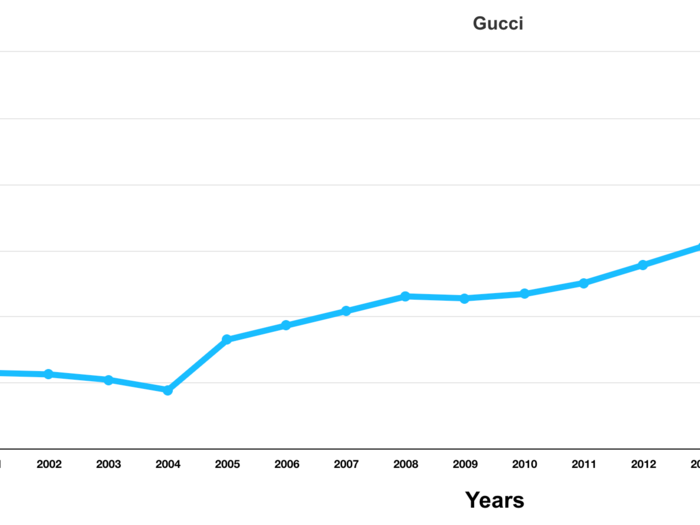
By 2005, Gucci had climbed back up to a valuation of $6.619 billion, but it was still nearly $10 billion less than where Louis Vuitton was around the same time, according to Interbrand.
Ford, as reported by CR Fashion Book, is credited as being Gucci's "savior." He was creative director from 1994 until 2004 and was known for helping to infuse a "sex appeal" that wasn't found in high fashion at the time.
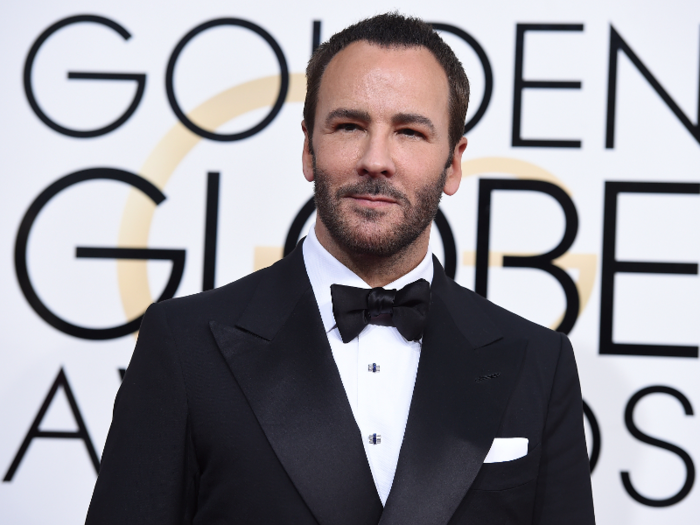
But Ford stepped down from the brand in 2004, following a dispute with Kering — Gucci's parent company.
That same year, Kering took a 99.4% ownership stake in the label, up from the 67.6% stake it had the year prior.
Source: CR Fashion Book
After Ford's departure in 2004, Alessandra Facchinetti stepped in to lead the womenswear division, while John Ray took over menswear and Frida Giannini was named creative director of accessories, Vogue reports.
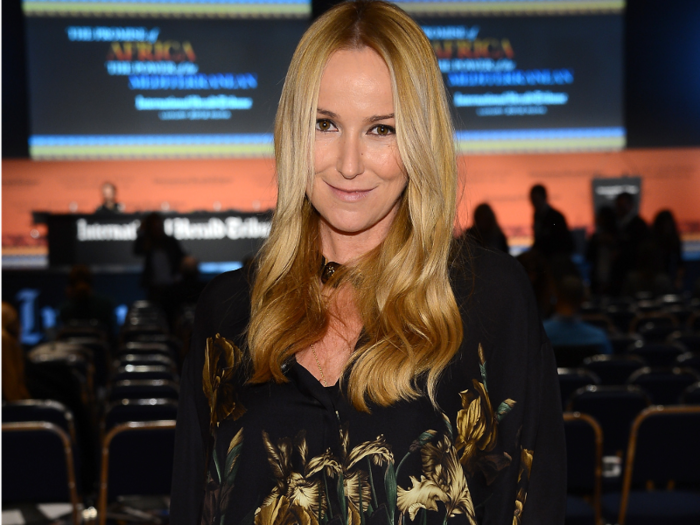
Giannini became creative director of the entire Gucci label in 2006, at which point she decided to focus on "heritage" and bring Gucci back to its roots.
Throughout her tenure, Giannini reimagined the brand's signature Flora print and redesigned some of their other classic fixtures. But her collections failed to garner consumer interestand received lukewarm reviews from her peers. Robins says this is probably due to leadership issues at the brand.
"Some of these brands expand three centuries; some of these brands are over two hundred years old," Robins told Business Insider. "[And] it's all about the strength of leadership and what that means for the brand .... If we are doing our jobs right, we are being guardians of those brands."
Source: Vogue, Business of Fashion
As writer Kimberly Ong noted in her 2017 essay about the brand, Gucci had suffered a massive blow to its image during Giannini's time at the helm, which ultimately followed the brand into the 2010s.
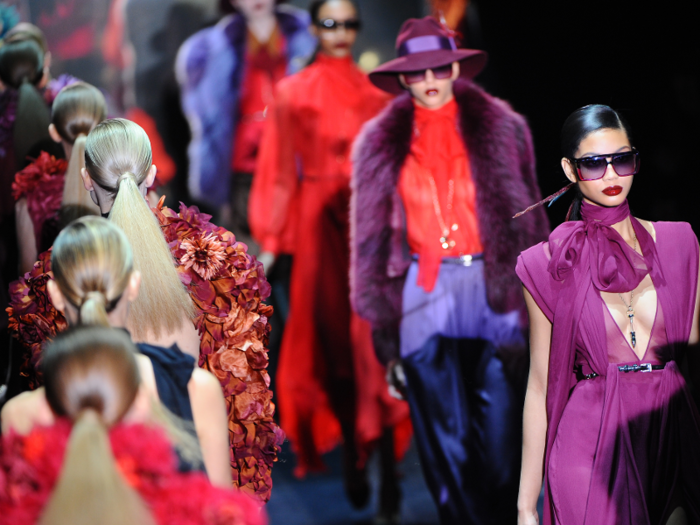
"Gucci was associated with bad taste," Ong wrote. "It was associated with gaudiness and outdatedness, and ultimately [it was] unrelatable. No one wanted to buy Gucci, and the company faced near bankruptcy."
Giannini left Gucci in 2015.
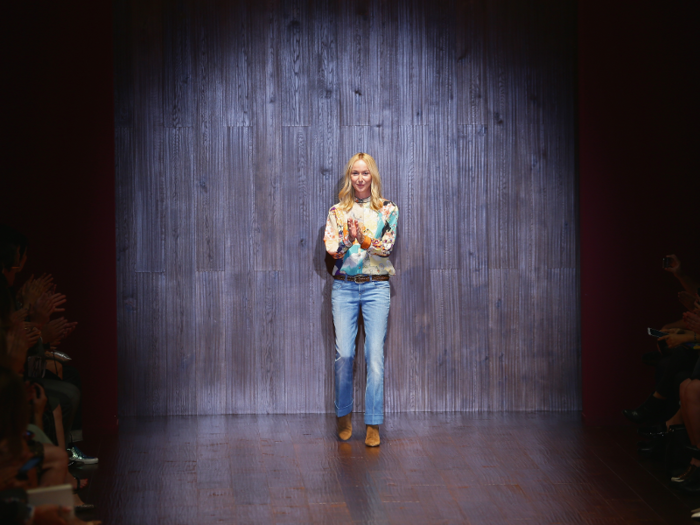
Gucci's brand valuation had reached a peak of $10.385 billion in 2014 but fell to $8.882 billion in 2015, according to Interbrand.
Louis Vuitton, meanwhile, entered the 2010s with a $21.86 billion brand valuation.
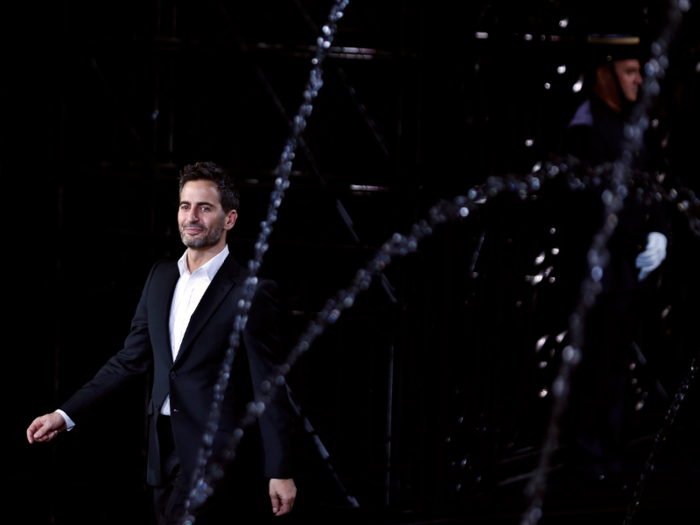
Jacobs remained the artistic director of women's collections at Louis Vuitton until 2013, when Nicolas Ghesquière took over. Over at Gucci, Alessandro Michele was tapped to take Giannini's place when she departed in 2015.
Ghesquière was then known for being the creative force behind the reinvention of Balenciaga.
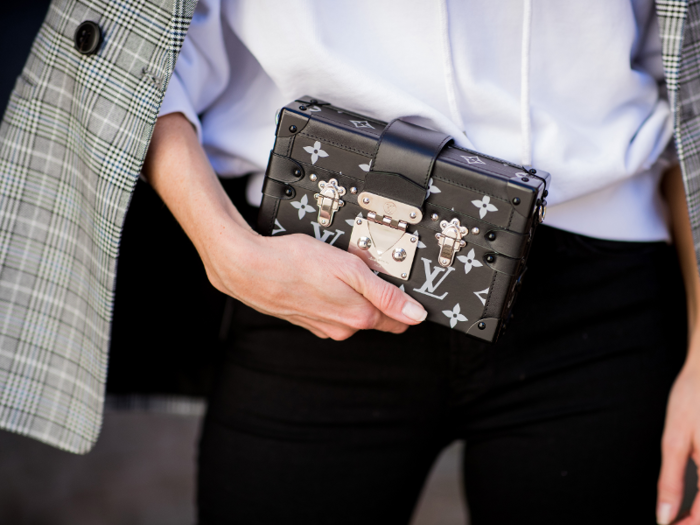
At Louis Vuitton, Ghesquière launched the now-popular petite malle bag — which was the trunk luggage reimagined as a purse. And the bag quickly became sought after by consumers.
Ghesquière also had Karl Lagerfeld, Christian Louboutin, Rei Kawakubo, and others each design a handbag for Louis Vuitton's 160th anniversary. The brand also collaborated with Jeff Koons for two collections.
In fall 2017, LV created a collection with Supreme — arguably one of the most profitable and influential fashion launches of the century.
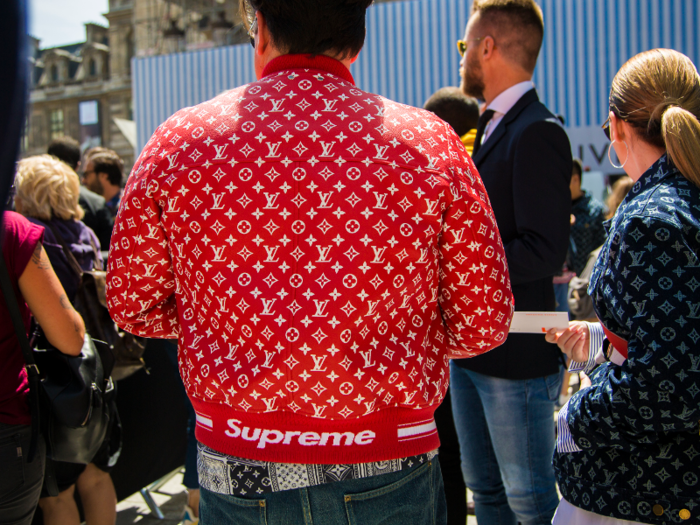
Women's Wear Daily reported that following the Supreme launch, Louis Vuitton's revenue jumped nearly 21% to nearly $17.3 billion and accounted for a 19% jump in LVMH profits the following year to $20.59 billion.
"[This collaboration] had a wider impact on the industry," Robins told Business Insider. "[We saw] this big shift in a greater openness, transparency, collaboration, [and] inclusiveness ... we've seen barriers broken down, we've seen collaborations on what is the next wave .... in some ways it was not unexpected. If anyone was going to be big on that, it would have been Louis Vuitton."
In 2018, Louis Vuitton appointed Virgil Abloh, founder and CEO of the popular streetwear brand Off-White, as the artistic director of its menswear collection.
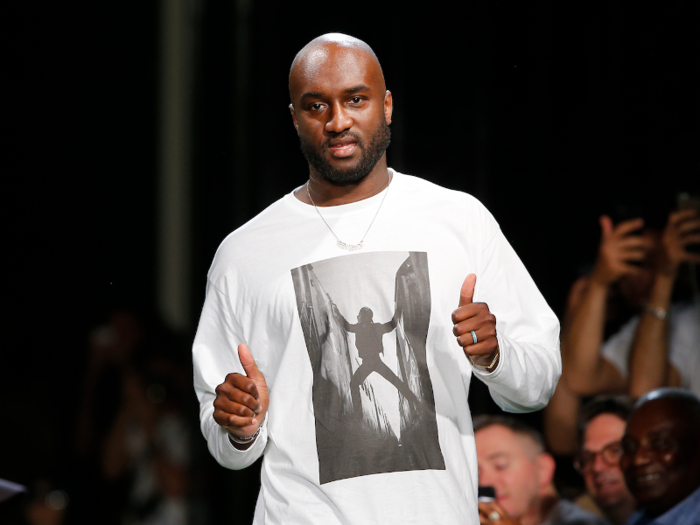
Abloh's appointment made him the first African American to be named artistic director of a French luxury fashion house, according to the New York Times.
Interbrand reports that LV's brand value increased substantially between 2017 and 2018, from $22.919 billion in 2017 to $28.152 billion in 2018.
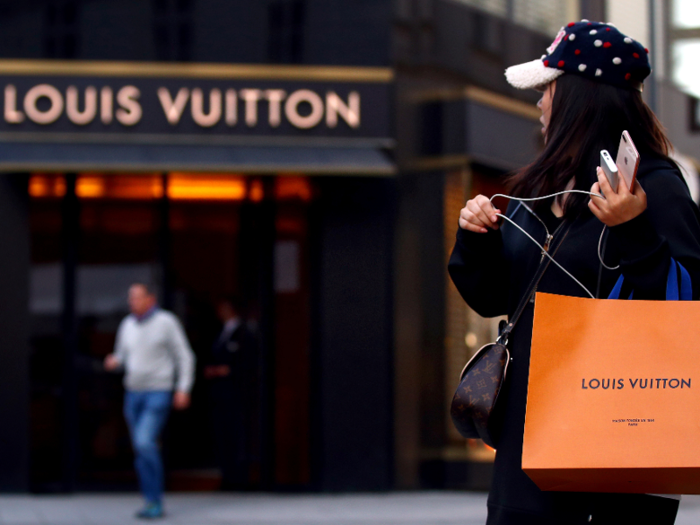
By 2019, the brand had jumped to a $32.223 billion brand valuation, making it the world's most valuable luxury brand, according to Interbrand.
Since then, the brand has been on a quest for (luxury) world domination. In January 2020, Louis Vuitton bought the second-largest diamond in the world, as Business Insider previously reported, in addition to launching a multiyear partnership with the NBA. It also announced plans to open up a restaurant in Japan.
Meanwhile, under Giannini's successor, Alessandro Michele, Gucci became 2019's fastest growing luxury brand, with a growth rate of 23% and a brand valuation of $15.949 billion — nearly double the valuation it had when Michele first took over the reins in 2015.
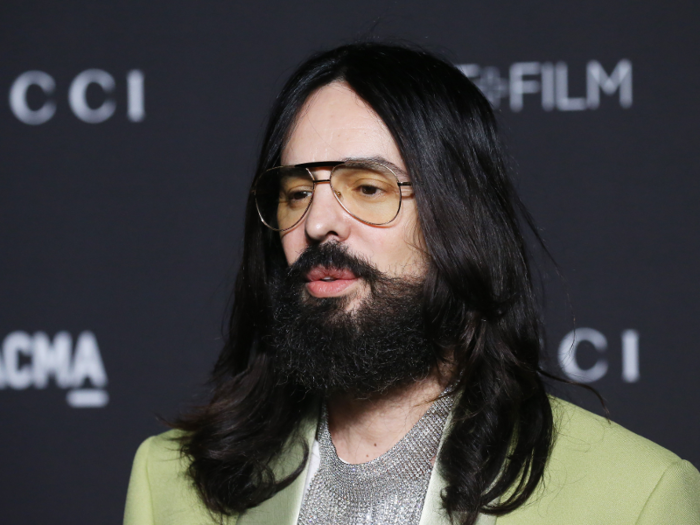
In 2017, Gucci grew 44.5%, Forbes reported, and had made up 39% of Kering's corporate revenues, and 57% of Kering's Luxury activities segment. In a 2017 interview with CNBC, Kering chairman and CEO Francois-Henri Pinault said that nearly 50% of Gucci's sales were coming from millennials. Today, Interbrand reports that number has jumped to more than 60%, with their fastest growing audience being Gen Z.
Much of Gucci's success comes from the way the brand has been able to utilize social media as a digital marketing tool.
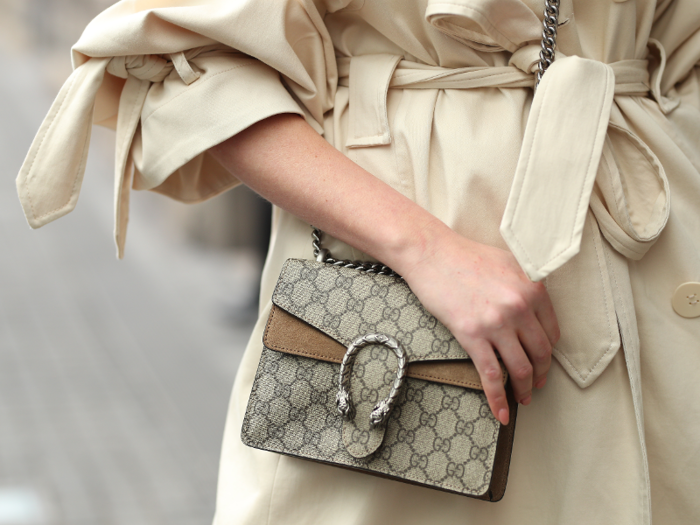
On the internet, the new Gucci collections stand out — they've got a contemporary feel, mixed with vintage classics. Michele even brought back the interlocking GG logo and the iconic Gucci bags from the 1960s, while introducing consumers to the Dionysus buckle.
In fact, as reported by Forbes, Gucci's CEO Marco Bizzarri told the Julius Baer Global Advisory Board that Michele had designed nearly all of Gucci's best selling items.
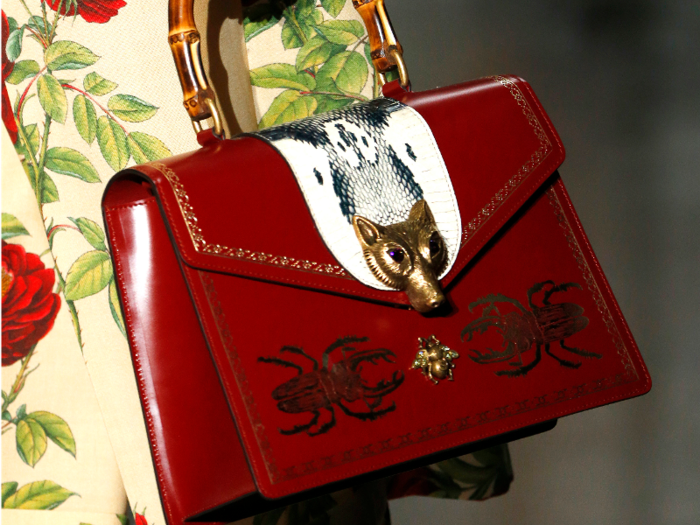
By the end of 2017, Forbes reported that Gucci had a 130% increase in web traffic, surpassing that of Louis Vuitton.
Gucci has been able to appeal to younger audiences by teaming up with contemporary icons of the day.
Gucci has worked with people such as singer Harry Styles, photographer Petra Collins, and artists such as Sue de Beer and James Kerr.
In addition, Michele has collaborated with director Glen Luchford to create short music films, including 2017's "Soul Scene" campaign which featured only black models and was inspired by black youth around the world. At the time, New York Magazine noted that the music video was part of Gucci's quest to re-market itself toward this new generation, and "signifie[d] the brand's push for more culturally relevant and boundary-pushing advertising."
"[Gucci] has become much more open, inclusive, transparent, and collaborative," Robins said. "It's almost a masterclass in leadership style, [of] a really powerful combination of creative and business leadership."
!["[Gucci] has become much more open, inclusive, transparent, and collaborative," Robins said. "It](https://staticbiassets.in/thumb/msid-73588487,width-700,height-525,imgsize-866058/gucci-has-become-much-more-open-inclusive-transparent-and-collaborative-robins-said-its-almost-a-masterclass-in-leadership-style-of-a-really-powerful-combination-of-creative-and-business-leadership-.jpg)
In 2017, Bizzarri said that the brand now had a "Millennial Shadow Committee," consisting of people under the age of 35, who give feedback on the brand. At the WWD's Apparel & Retail CEO Summit in 2017, Bizzarri revealed that the shadow committee is given tasks of "either discussing the same topics that we discuss in the normal meeting with executives, or giving me ideas on different processes."
In turn, the "gaudiness" Gucci was once negatively associated with has become its signature. In 2019, Gucci sponsored the Met Gala, which had the theme "camp" — defined by Susan Sontag's 1964 essay as "love of the unnatural: of artifice and exaggeration."

"The strength [is] in [Bizzarri and Michele's] working relationship and what that meant to not only consumers, but also to Gucci's employees," Robins told Business Insider. "I think that's been a really powerful shift in how the brand has shown up differently, both on the inside and on the outside."
Gucci is, as many would say, the modern day example of "camp." Or, to others, simply "ugly fashion."
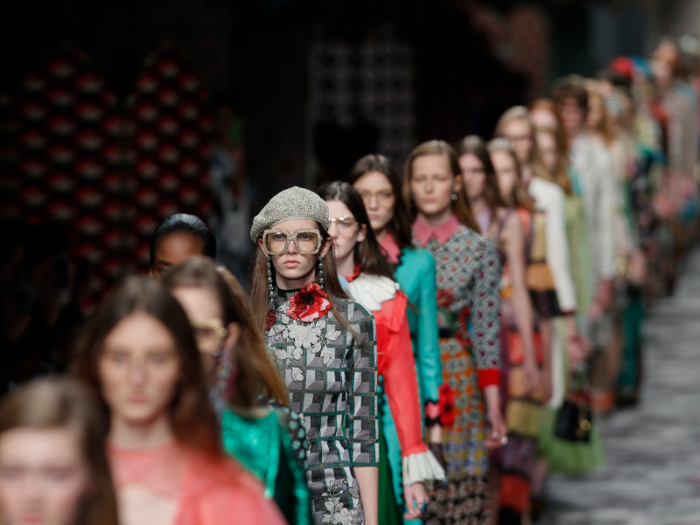
In 2018, Gucci released a collaboration with designer Dapper Dan, inspired by the latter designer's life in Harlem and pieces from his 1980s archive. Ironically, the man who got his start selling knockoff Gucci and Louis Vuitton launched a successful collaboration with the former, nearly 30 years later.
And so now it's the turn of a new decade, and Gucci's snake logos, butterflies, wolves, interlocking G-tights, clashing colors, textiles, and fabrics — once considered emblematic of the brand's "outdatedness" — has become a signature of the time.

Through the use of successful digital marketing, Gucci finally became cool again — because, quite simply, they told everyone they were cool.
And then they proved it.
Popular Right Now
Popular Keywords
Advertisement